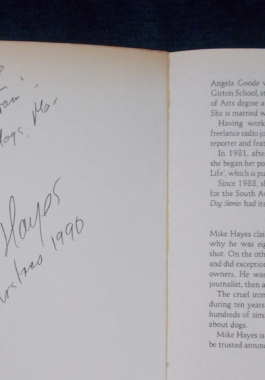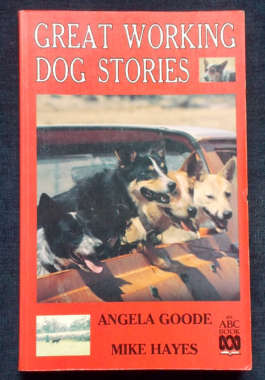-
 Never before had royal authority been so fundamentally challenged. Eight centuries later, 63 clauses of the original Magna Carta are still in use. But this is not a dry treatise of this well-covered historical event: it is also what it was like to live in that momentous year. Fashion, food, religion, sex, education and medicine...Spectacles were invented...windmills were erected...Oxford became the first university and the cathedrals of Lincoln and Salisbury were built. Full of rich detail, from great matters of state to everyday domestic life.
Never before had royal authority been so fundamentally challenged. Eight centuries later, 63 clauses of the original Magna Carta are still in use. But this is not a dry treatise of this well-covered historical event: it is also what it was like to live in that momentous year. Fashion, food, religion, sex, education and medicine...Spectacles were invented...windmills were erected...Oxford became the first university and the cathedrals of Lincoln and Salisbury were built. Full of rich detail, from great matters of state to everyday domestic life. -
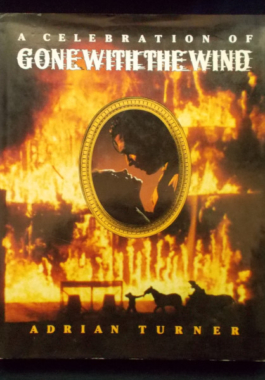 Gone With The Wind was the most commercially successful film ever made. Decades later, it still retains all the excitement, drama, glamour and romance that the world flocked to see in 1939 and 1940. This is a lavish behind the scenes look at how it was made - from David O. Selznick's inspired determination to bring it to life, the hiring and firing of script writers, directors and cameramen; the casting of Clark Gable as Rhett and the year long search for the perfect Scarlett...followed by the seemingly unending editing, the sneak previews, the sneers of Hollywood and finally, the triumphant Atlanta premiere attended by four Civil War veterans and ten Academy Awards. This is a unique pictorial record of a film that sums up the madness and the genius of the Hollywood system and a tribute to the men and women who all contributed to Gone With The Wind .
Gone With The Wind was the most commercially successful film ever made. Decades later, it still retains all the excitement, drama, glamour and romance that the world flocked to see in 1939 and 1940. This is a lavish behind the scenes look at how it was made - from David O. Selznick's inspired determination to bring it to life, the hiring and firing of script writers, directors and cameramen; the casting of Clark Gable as Rhett and the year long search for the perfect Scarlett...followed by the seemingly unending editing, the sneak previews, the sneers of Hollywood and finally, the triumphant Atlanta premiere attended by four Civil War veterans and ten Academy Awards. This is a unique pictorial record of a film that sums up the madness and the genius of the Hollywood system and a tribute to the men and women who all contributed to Gone With The Wind . -
 The son of W.E. (Bill) Harney, the legendary writer and story-teller and Ludi Yibuluyma, a Waradaman woman, Yidumduma Bill Harney had little contact with his father. Instead, he was brought up straddling both heritages learning the traditional Aboriginal way of of life and the white man's way. Yidumduma Bill witnessed horrific acts such as cattle station owners poisoning Aborigines and welfare officers seizing part-Aboriginal children. His own sister Dulcie was taken by the authorities and he narrowly escaped the same fate. Years later, he had to fight to keep his own sons. Bill has seen the disintegration of the traditional Aboriginal way of life and the end of the livelihood of stockmen and drovers. Shocking stories of casual cruelty and violence sit alongside the tales of the Dreamtime, graphic details of the bush tucker of his childhood and hilarious yarns about drunken drovers, crafty poddy-dodgers and miserable publicans.
The son of W.E. (Bill) Harney, the legendary writer and story-teller and Ludi Yibuluyma, a Waradaman woman, Yidumduma Bill Harney had little contact with his father. Instead, he was brought up straddling both heritages learning the traditional Aboriginal way of of life and the white man's way. Yidumduma Bill witnessed horrific acts such as cattle station owners poisoning Aborigines and welfare officers seizing part-Aboriginal children. His own sister Dulcie was taken by the authorities and he narrowly escaped the same fate. Years later, he had to fight to keep his own sons. Bill has seen the disintegration of the traditional Aboriginal way of life and the end of the livelihood of stockmen and drovers. Shocking stories of casual cruelty and violence sit alongside the tales of the Dreamtime, graphic details of the bush tucker of his childhood and hilarious yarns about drunken drovers, crafty poddy-dodgers and miserable publicans. -
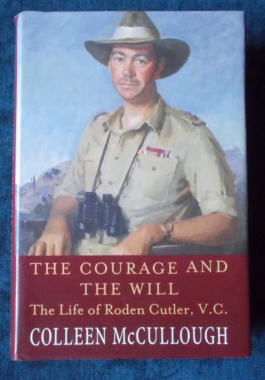 Roden Cutler's list of honours is long and impressive, but it is his sole decoration, the Victoria Cross, that marks him as a hero. Over 800,000 men and women served in the Australian armed forces during the Second World War, but only twenty were awarded the V.C. Here are is the vivid life and times of the young soldier with the dashing good looks, the laconic humour and dislike of pretension who came back from the war determined to continue to support his mother, but, having lost a leg, with no idea how to do so. Yet by the age of 29 he was the Australian High Commissioner to New Zealand and his future diplomatic career would include stints to Ceylon, Egypt during the Suez crisis of 1956, Pakistan and New York. In 1966 he was appointed Governor of New South Wales; during his 15 years in the office he shared with Captain Arthur Phillip and Lachlan Macquarie, he earned his own niche among them as the `people's governor'. Much loved, still remembered as a man equally at home in the company of royalty or trade unionists. His story is embedded in Australian history, and part of it. But it is also the story of a man who pulled himself up by his bootstraps to serve his country with courage and dignity in the face of all obstacles.
Roden Cutler's list of honours is long and impressive, but it is his sole decoration, the Victoria Cross, that marks him as a hero. Over 800,000 men and women served in the Australian armed forces during the Second World War, but only twenty were awarded the V.C. Here are is the vivid life and times of the young soldier with the dashing good looks, the laconic humour and dislike of pretension who came back from the war determined to continue to support his mother, but, having lost a leg, with no idea how to do so. Yet by the age of 29 he was the Australian High Commissioner to New Zealand and his future diplomatic career would include stints to Ceylon, Egypt during the Suez crisis of 1956, Pakistan and New York. In 1966 he was appointed Governor of New South Wales; during his 15 years in the office he shared with Captain Arthur Phillip and Lachlan Macquarie, he earned his own niche among them as the `people's governor'. Much loved, still remembered as a man equally at home in the company of royalty or trade unionists. His story is embedded in Australian history, and part of it. But it is also the story of a man who pulled himself up by his bootstraps to serve his country with courage and dignity in the face of all obstacles. -
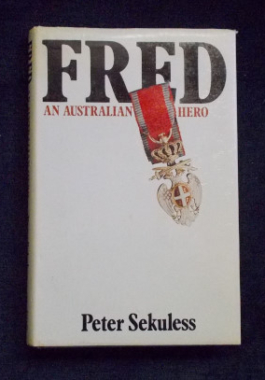 Toward the end of 1977, articles appeared in Australian newspapers about a remarkable 97 year-old Australian who had just died in Khartoum. They told of an heroic figure who had been with General Freyberg, then a junior officer, when he made his daring Dardenelles swim before the landing at Gallipoli; who had been mentioned in dispatches at the Battle of Beersheba; who had been with Lawrence of Arabia and who had won several decorations, including the George Cross for bravery under fire when he was chauffeur to the Governor-General of the Sudan at the time of his assassination in Cairo in 1924. He was one of the few Australians ever to win the coveted Serbian Eagle. This incredible Australian was Frederick Hamilton March. The newspaper articles so intrigued Sekuless than he began keeping a file on Fred March. Eventually, he travelled to Khartoum, Cairo, Gallipoli and London in a quest for information about this elusive and unknown Aussie hero to piece together the fascinating story of Fred March. Illustrated with black and white archival photographs.
Toward the end of 1977, articles appeared in Australian newspapers about a remarkable 97 year-old Australian who had just died in Khartoum. They told of an heroic figure who had been with General Freyberg, then a junior officer, when he made his daring Dardenelles swim before the landing at Gallipoli; who had been mentioned in dispatches at the Battle of Beersheba; who had been with Lawrence of Arabia and who had won several decorations, including the George Cross for bravery under fire when he was chauffeur to the Governor-General of the Sudan at the time of his assassination in Cairo in 1924. He was one of the few Australians ever to win the coveted Serbian Eagle. This incredible Australian was Frederick Hamilton March. The newspaper articles so intrigued Sekuless than he began keeping a file on Fred March. Eventually, he travelled to Khartoum, Cairo, Gallipoli and London in a quest for information about this elusive and unknown Aussie hero to piece together the fascinating story of Fred March. Illustrated with black and white archival photographs. -
 Henderson spent five years collecting New Zealand 'swagger' stories - those of men and women of the road - with such wonderful characters as John the Baptist, Russian Jack, Barney White Rats, The Shiner and many more you couldn't possibly invent, from the early days of New Zealand. With beautiful line drawings by Mark Dunstan.
Henderson spent five years collecting New Zealand 'swagger' stories - those of men and women of the road - with such wonderful characters as John the Baptist, Russian Jack, Barney White Rats, The Shiner and many more you couldn't possibly invent, from the early days of New Zealand. With beautiful line drawings by Mark Dunstan. -

 Three volumes in one: The Heart Of London: A collection of newspaper stories he wrote for The Daily Express on his return to Fleet Street from service with the Warwickshire Yeomanry in World War I. Morton investigates Petticoat Lane; the Caledonian market; the free cancer hospital; watches faces in The Strand; the Westminster Abbey waxworks and much more. The Spell Of London: anecdotes from his daily trawls of London, packed with humour and charm combined with acute observation, sympathy and an engaging curiosity. He investigates the Tower of London, Big Ben, Leather Lane Street Market; The Children's Ward ; The Notting Hill Rag Fair and more. The Nights Of London: Anecdotes from his nightly trawls of London with acute observations of the night life he observes; when the 'Tubes' stop; ships at sight; Waterloo Bridge; stage doors; a night in hospital; Fan-Tan; pub crawlers; night clubs and more.
Three volumes in one: The Heart Of London: A collection of newspaper stories he wrote for The Daily Express on his return to Fleet Street from service with the Warwickshire Yeomanry in World War I. Morton investigates Petticoat Lane; the Caledonian market; the free cancer hospital; watches faces in The Strand; the Westminster Abbey waxworks and much more. The Spell Of London: anecdotes from his daily trawls of London, packed with humour and charm combined with acute observation, sympathy and an engaging curiosity. He investigates the Tower of London, Big Ben, Leather Lane Street Market; The Children's Ward ; The Notting Hill Rag Fair and more. The Nights Of London: Anecdotes from his nightly trawls of London with acute observations of the night life he observes; when the 'Tubes' stop; ships at sight; Waterloo Bridge; stage doors; a night in hospital; Fan-Tan; pub crawlers; night clubs and more. -
 What does a man in a New York City hospital, with no idea how he got there, have in common with two homicide detectives, murder, an American hit record, rock festivals, the Toorak library, six air hostesses, a Las Vegas wedding, James Bond's Aston Martin, and Gracelands? Who is this man? The answer is Australian rock legend Billy Thorpe. As Billy lies in his hospital bed, trying vainly to work out how even he managed to get himself into this mess, he wanders through the corridors of his life: the music, mayhem and mind-altering substances; the Sunbury Aztecs; the girls; the characters; the '70s...It doesn't get any better than this. Take the trip.
What does a man in a New York City hospital, with no idea how he got there, have in common with two homicide detectives, murder, an American hit record, rock festivals, the Toorak library, six air hostesses, a Las Vegas wedding, James Bond's Aston Martin, and Gracelands? Who is this man? The answer is Australian rock legend Billy Thorpe. As Billy lies in his hospital bed, trying vainly to work out how even he managed to get himself into this mess, he wanders through the corridors of his life: the music, mayhem and mind-altering substances; the Sunbury Aztecs; the girls; the characters; the '70s...It doesn't get any better than this. Take the trip. -
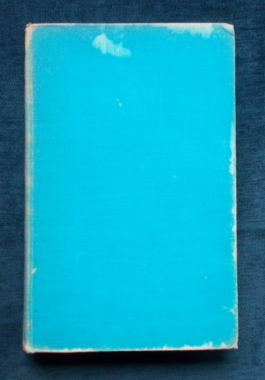
 It would be easy to think of Mrs. Beeton, with her massive compendium of recipes and remedies for literally every household problem as an elderly, wise woman. Yet she was only 29 when she died. She began by writing a recipe column for a magazine published by her husband, Samuel. There were a few recipe books at the time, but none that a young lady setting forth on matrimony could refer to for solutions to the day-to-day problems of running a household. In 1859 the Beetons launched a series of 48-page monthly supplements to The Englishwoman's Domestic Magazine; the 24 instalments were published in one volume as the now-famous Mrs Beeton's Book of Household Management in October 1861, which sold 60,000 copies in the first year. Of the 1,112 pages, over 900 contained recipes. The remainder provided advice on fashion, child care, animal husbandry, poisons, the management of servants, science, religion, first aid and the importance in the use of local and seasonal produce. This biography of Mrs Beeton and her husband Samuel was written by her great-niece, Nancy Spain. A very fascinating read.
It would be easy to think of Mrs. Beeton, with her massive compendium of recipes and remedies for literally every household problem as an elderly, wise woman. Yet she was only 29 when she died. She began by writing a recipe column for a magazine published by her husband, Samuel. There were a few recipe books at the time, but none that a young lady setting forth on matrimony could refer to for solutions to the day-to-day problems of running a household. In 1859 the Beetons launched a series of 48-page monthly supplements to The Englishwoman's Domestic Magazine; the 24 instalments were published in one volume as the now-famous Mrs Beeton's Book of Household Management in October 1861, which sold 60,000 copies in the first year. Of the 1,112 pages, over 900 contained recipes. The remainder provided advice on fashion, child care, animal husbandry, poisons, the management of servants, science, religion, first aid and the importance in the use of local and seasonal produce. This biography of Mrs Beeton and her husband Samuel was written by her great-niece, Nancy Spain. A very fascinating read. -
 A thorough and fully detailed guide to all popular forms of angling with every step covered - from buying that first outfit to knot tying, rigging, casting right through to more sophisticated techniques and advanced sportfishing methods. There's scientific analysis of the evolution, anatomy and senses of fish as they affect the angler; an item by item guide to choosing, buying and caring for tackle and equipment; fishing knots, rigging, bait selection, casting and 'reading the water'; fishing maps of the Australian coastline as well as most inland waterways; descriptions of more than 120 fish; fish cleaning and cookery, photography, record keeping, conservation and fishing club information; abundant fact boxes, charts, tables and diagrams and more.
A thorough and fully detailed guide to all popular forms of angling with every step covered - from buying that first outfit to knot tying, rigging, casting right through to more sophisticated techniques and advanced sportfishing methods. There's scientific analysis of the evolution, anatomy and senses of fish as they affect the angler; an item by item guide to choosing, buying and caring for tackle and equipment; fishing knots, rigging, bait selection, casting and 'reading the water'; fishing maps of the Australian coastline as well as most inland waterways; descriptions of more than 120 fish; fish cleaning and cookery, photography, record keeping, conservation and fishing club information; abundant fact boxes, charts, tables and diagrams and more. -
 Richard Goldstein was the respected voice of popular culture, sex, and politics of the 60s and 70s. Most important of all he was the voice of the music scene in all its newness and vitality, as Goldstein discovered it - from The Shangri-Las, The Rolling Stones and The Lovin' Spoonful to Mama Cass, Ravi Shankar, The Doors, The Grateful Dead, The Jefferson Airplane and The Beatles. This was the era of irreversible change in society, from one end to the other. All the rules were broken and it's all recorded here, in Goldstein's 'scrapbook'.
Richard Goldstein was the respected voice of popular culture, sex, and politics of the 60s and 70s. Most important of all he was the voice of the music scene in all its newness and vitality, as Goldstein discovered it - from The Shangri-Las, The Rolling Stones and The Lovin' Spoonful to Mama Cass, Ravi Shankar, The Doors, The Grateful Dead, The Jefferson Airplane and The Beatles. This was the era of irreversible change in society, from one end to the other. All the rules were broken and it's all recorded here, in Goldstein's 'scrapbook'. -
 In the time of Shakespeare, there was intense interest in gardens. Gardens not only provided beauty - they provided healing herbs, vegetables, fruit, perfumes and household remedies. New plants were being brought to England from all over the world and Elizabethan gardens reached a peak of beauty and complexity. This beautifully produced book features fourteen gardens: three gardens on properties owned by Shakespeare; three restorations of major Elizabethan period gardens; gardens in the United States inspired by and dedicated to the Bard; and the Canadian gardens of Stratford, Ontario and British Columbia. The author is one of the premier landscape photographers and each entry has a detailed description and history of its creation; each photograph is accompanied by a substantial quotation from the play in which the plant or tree is referenced by the Bard.
In the time of Shakespeare, there was intense interest in gardens. Gardens not only provided beauty - they provided healing herbs, vegetables, fruit, perfumes and household remedies. New plants were being brought to England from all over the world and Elizabethan gardens reached a peak of beauty and complexity. This beautifully produced book features fourteen gardens: three gardens on properties owned by Shakespeare; three restorations of major Elizabethan period gardens; gardens in the United States inspired by and dedicated to the Bard; and the Canadian gardens of Stratford, Ontario and British Columbia. The author is one of the premier landscape photographers and each entry has a detailed description and history of its creation; each photograph is accompanied by a substantial quotation from the play in which the plant or tree is referenced by the Bard. -
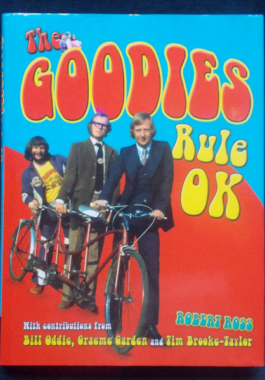 A kitten called Twinkle, a giant Dougal, over-sized flat caps and black puddings, a trandem and the chorus of The Funky Gibbon are just some of the unforgettable Goodie delights that burned their way indelibly into the world's collective consciousness in the 70s. The undisputed kings of comedy - Tim Brooke-Taylor, Graeme Garden and Bill Oddie created the most inventive, imaginative and consistently hilarious of the day and this is a celebration of their genius. Nothing was sacred - from the Royal Family to Mary Whitehouse. Packed with photographs, memorabilia and recollections from Tim, Bill, Graeme and The Goodies directors, it's the amazing story of how this talented trio from Cambridge University became a cult phenomenon that had plenty of pratfall and silliness for kids and plenty of 'saucy bits' for the grown-ups as well! Includes a list and synopsis of every episode from all nine series.
A kitten called Twinkle, a giant Dougal, over-sized flat caps and black puddings, a trandem and the chorus of The Funky Gibbon are just some of the unforgettable Goodie delights that burned their way indelibly into the world's collective consciousness in the 70s. The undisputed kings of comedy - Tim Brooke-Taylor, Graeme Garden and Bill Oddie created the most inventive, imaginative and consistently hilarious of the day and this is a celebration of their genius. Nothing was sacred - from the Royal Family to Mary Whitehouse. Packed with photographs, memorabilia and recollections from Tim, Bill, Graeme and The Goodies directors, it's the amazing story of how this talented trio from Cambridge University became a cult phenomenon that had plenty of pratfall and silliness for kids and plenty of 'saucy bits' for the grown-ups as well! Includes a list and synopsis of every episode from all nine series. -
 This memoir, which Gypsy began as a series of pieces for The New Yorker, contains photographs and newspaper clippings from her personal scrapbooks and an afterword by her son, Erik Lee Preminger. By turns touching and hilarious, Gypsy describes her childhood trouping across 1920s America on the vaudeville circuit through to her rise to stardom as The Queen of Burlesque in 1930s New York - where gin came in bathtubs, gangsters were celebrities, and Walter Winchell was king. Her story features outrageous characters - among them Broadway’s funny girl, Fanny Brice, who schooled Gypsy in how to be a star; gangster Waxy Gordon - who bears an intriguing resemblance to Al Capone - who paid for her to have her teeth fixed; and her indomitable mother, Rose, who lived by her own version of the Golden Rule: “Do unto others … before they do you.” And here's a tale from her revue days: The manager had advertised the show as 'fifty beautiful girls, 45 glamorous costumes... Lee says, "And I was the one that convinced the customers that I was the other five girls!" With black and white photographs - and here's what some other readers thought: https://www.goodreads.com/book/show/143890.Gypsy?from_search=true&from_srp=true&qid=mqwbhqxEnt&rank=1
This memoir, which Gypsy began as a series of pieces for The New Yorker, contains photographs and newspaper clippings from her personal scrapbooks and an afterword by her son, Erik Lee Preminger. By turns touching and hilarious, Gypsy describes her childhood trouping across 1920s America on the vaudeville circuit through to her rise to stardom as The Queen of Burlesque in 1930s New York - where gin came in bathtubs, gangsters were celebrities, and Walter Winchell was king. Her story features outrageous characters - among them Broadway’s funny girl, Fanny Brice, who schooled Gypsy in how to be a star; gangster Waxy Gordon - who bears an intriguing resemblance to Al Capone - who paid for her to have her teeth fixed; and her indomitable mother, Rose, who lived by her own version of the Golden Rule: “Do unto others … before they do you.” And here's a tale from her revue days: The manager had advertised the show as 'fifty beautiful girls, 45 glamorous costumes... Lee says, "And I was the one that convinced the customers that I was the other five girls!" With black and white photographs - and here's what some other readers thought: https://www.goodreads.com/book/show/143890.Gypsy?from_search=true&from_srp=true&qid=mqwbhqxEnt&rank=1 -
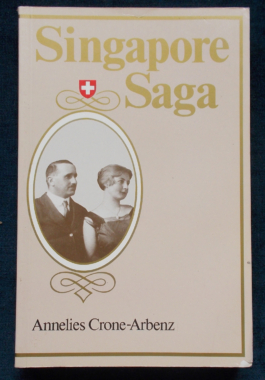 Part One of this autobiography relates the dramatic escape to Australia of three young Swiss sisters during the Japanese invasion of Singapore, then traces their gradual and complete adaption to the Australian way of life by the youngest sister, Annelies. Part Two is the story of their father, the Swiss Consul and their mother Gritli, who remained in Singapore at their posts in dedication to their community. This second part is translated from the recently discovered original diaries of their father, Rudolph Arbenz.
Part One of this autobiography relates the dramatic escape to Australia of three young Swiss sisters during the Japanese invasion of Singapore, then traces their gradual and complete adaption to the Australian way of life by the youngest sister, Annelies. Part Two is the story of their father, the Swiss Consul and their mother Gritli, who remained in Singapore at their posts in dedication to their community. This second part is translated from the recently discovered original diaries of their father, Rudolph Arbenz. -
 Here is the definitive history of Qantas, tracing the formation of the Queensland and Northern Territory Aerial Services, its struggles in outback Queensland, its steady growth and the rivalry as the competition increased. Plenty of archival black and white photographs.
Here is the definitive history of Qantas, tracing the formation of the Queensland and Northern Territory Aerial Services, its struggles in outback Queensland, its steady growth and the rivalry as the competition increased. Plenty of archival black and white photographs. -

Running Amok: Mark Bowling
$20.00As a journalist, Mark goes where the stories are - from East Timor to cover the struggle for independence, to Aceh and West Papua to report on the separatist crisis and to Ambon where Christians and Muslims wage a bloody war. But he is also a husband and father. Amid the violence he and wife Kim set out to make a home for their family, trying to balance the demands of life as a foreign correspondent with the strangeness of a very different culture and a country running amok. Bowling joined ABC as a reporter in 1985. Illustrated with colour photos on verso of front and back covers. -

 A real gem for a sports or bowls fanatic - a celebration of this historical sporting event that Australia was the first nation to host. This volume contains photographs of the Championship Executive Committee, the Organising Committee, articles on the Leagues Bowling Club at Kyeemagh, the game of bowls, ladies' bowling, David Bryant, Neil Benjamin, how bowls became a business, conditions of play and of course - individual photographs of the team members who competed: Australia, Canada, England, Fiji, Hong Kong, Ireland, Jersey, Kenya, Malawi, New Zealand, Papua-New Guinea, Rhodesia,Scotland, South Africa,United States and Wales. There is a daily programme featured and this copy includes a stapled-in alternate programme and a pass card; AND this copy also contains numerous autographs. On a loose slip: David Bryant (World Champion) and Harry Reston 'Scottish Skip' (Scotland); Australia: autographs of Geoff Kelly (Captain) and Peter Rheuben (acquired later since he did not compete in '66); England: autographs of Robbie Stenhouse, Derek 'Mick' Cooper, David Bryant, Tom Brown and John L. Coles (England Bowling Association, replacing William H. Lewis, President, English Bowling Association); Ireland: Cecil Beck and Charlie Taylor; New Zealand: George Boulton, N.Z. Bowling Association President, Norman Lash, Gordon Jolly, Phil Skoglund; Papua-New Guinea: Eric Carburn, Allan Ramsbocham, Barry Welsh, Wally Jackson, Jack Spears; Rhodesia: W.J.R. 'Bill' Jackson; South Africa: Thomas Crossan Press. Numerous photographs.
A real gem for a sports or bowls fanatic - a celebration of this historical sporting event that Australia was the first nation to host. This volume contains photographs of the Championship Executive Committee, the Organising Committee, articles on the Leagues Bowling Club at Kyeemagh, the game of bowls, ladies' bowling, David Bryant, Neil Benjamin, how bowls became a business, conditions of play and of course - individual photographs of the team members who competed: Australia, Canada, England, Fiji, Hong Kong, Ireland, Jersey, Kenya, Malawi, New Zealand, Papua-New Guinea, Rhodesia,Scotland, South Africa,United States and Wales. There is a daily programme featured and this copy includes a stapled-in alternate programme and a pass card; AND this copy also contains numerous autographs. On a loose slip: David Bryant (World Champion) and Harry Reston 'Scottish Skip' (Scotland); Australia: autographs of Geoff Kelly (Captain) and Peter Rheuben (acquired later since he did not compete in '66); England: autographs of Robbie Stenhouse, Derek 'Mick' Cooper, David Bryant, Tom Brown and John L. Coles (England Bowling Association, replacing William H. Lewis, President, English Bowling Association); Ireland: Cecil Beck and Charlie Taylor; New Zealand: George Boulton, N.Z. Bowling Association President, Norman Lash, Gordon Jolly, Phil Skoglund; Papua-New Guinea: Eric Carburn, Allan Ramsbocham, Barry Welsh, Wally Jackson, Jack Spears; Rhodesia: W.J.R. 'Bill' Jackson; South Africa: Thomas Crossan Press. Numerous photographs. -
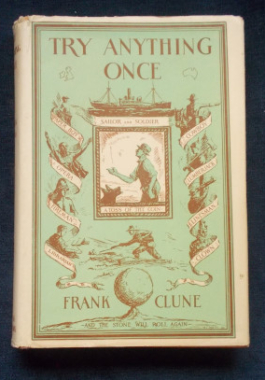 Clune's first book - his autobiography beginning with leaving home at 15 and ending with his marriage and a family. In between...he traveled the world, often crewing on ships, travelled around Australia and was been fired or quit from more jobs than most people have hot dinners. Clune, like all lovable rogues, finds himself in all sorts of strife - mostly of his own making, whether it be applying for the United States cavalry to enlisting with the Australian Army and serving in Gallipoli; he also worked as a salesman, butcher, paper boy, lumberjack, clown, opera...
Clune's first book - his autobiography beginning with leaving home at 15 and ending with his marriage and a family. In between...he traveled the world, often crewing on ships, travelled around Australia and was been fired or quit from more jobs than most people have hot dinners. Clune, like all lovable rogues, finds himself in all sorts of strife - mostly of his own making, whether it be applying for the United States cavalry to enlisting with the Australian Army and serving in Gallipoli; he also worked as a salesman, butcher, paper boy, lumberjack, clown, opera... -
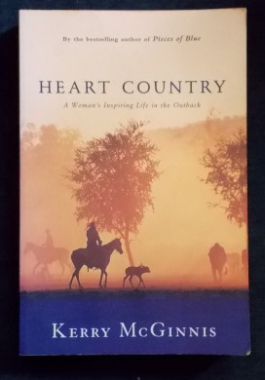 The sequel to Pieces Of Blue. After seven years on the road with her family, Kerry McGinnis is tired of the wandering life and yearns for a proper home. When her father, the irascible but loveable Mac, buys a property in Queensland's Gulf Country, it seems like she might have found one. But not everything goes smoothly. In their struggle to make a go of things, the McGinnis family encounters fire, flood, a three-metre python, and other, human obstacles. Sian, the eldest son, is at loggerheads with his father, while Mac soon develops itchy feet. And Kerry and her sister Judith discover that life in a man's country is far from easy. At a time when young women are expected to settle down and have a family, Kerry must make some difficult decisions about love, marriage and her passionate desire to write.
The sequel to Pieces Of Blue. After seven years on the road with her family, Kerry McGinnis is tired of the wandering life and yearns for a proper home. When her father, the irascible but loveable Mac, buys a property in Queensland's Gulf Country, it seems like she might have found one. But not everything goes smoothly. In their struggle to make a go of things, the McGinnis family encounters fire, flood, a three-metre python, and other, human obstacles. Sian, the eldest son, is at loggerheads with his father, while Mac soon develops itchy feet. And Kerry and her sister Judith discover that life in a man's country is far from easy. At a time when young women are expected to settle down and have a family, Kerry must make some difficult decisions about love, marriage and her passionate desire to write. -
 Wages were cut by 20 per cent, but not the mortgage. The dole was a pittance. People lived in shanty towns and camped in empty buildings. They stood in queues, seemingly forever, despised by bureaucrats and slowly losing their self respect...And there were weevils in the flour. This book was five years in the making, taken from over 200 taped interviews - teachers and carpenters, soldier settlers, wharfies, Communist spokesmen, miners, swaggies, policemen and businessmen. There are interviews with those who were children at the time; housewives, husbands, single men and women. This is a grass roots study of a period of Australian history described by the people to whom it happened, who endured, suffered and made the best of it. But more than that, it is a study in human understanding - as we learn to live someone else's life: to beg for food, to walk miles to find walk, faint with hunger, to jump trains, make clothes out of flour bags, live for days on half a case of rotten pears, to make do...and still preserve our human dignity. The Sydney Morning Herald: 'The range of this book is immense...it should become a major work of reference in Australian social history.'
Wages were cut by 20 per cent, but not the mortgage. The dole was a pittance. People lived in shanty towns and camped in empty buildings. They stood in queues, seemingly forever, despised by bureaucrats and slowly losing their self respect...And there were weevils in the flour. This book was five years in the making, taken from over 200 taped interviews - teachers and carpenters, soldier settlers, wharfies, Communist spokesmen, miners, swaggies, policemen and businessmen. There are interviews with those who were children at the time; housewives, husbands, single men and women. This is a grass roots study of a period of Australian history described by the people to whom it happened, who endured, suffered and made the best of it. But more than that, it is a study in human understanding - as we learn to live someone else's life: to beg for food, to walk miles to find walk, faint with hunger, to jump trains, make clothes out of flour bags, live for days on half a case of rotten pears, to make do...and still preserve our human dignity. The Sydney Morning Herald: 'The range of this book is immense...it should become a major work of reference in Australian social history.' -
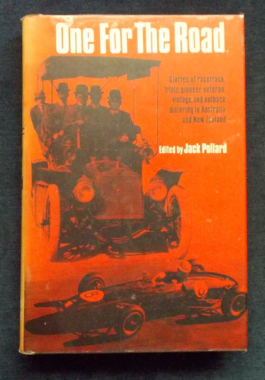 Stories and yarns of racetrack, trials, pioneer, veteran, vintage and outback motoring in Australia and New Zealand. Contributors include: Peter Antill (The Emus Were Scary); Nino Culotta (By Taxi to King's Bloody Cross); Bruce McClaren (A Racing Driver's Story) and the Australian Automobile Clubs ( Australian Cars Go To War!) among many others.
Stories and yarns of racetrack, trials, pioneer, veteran, vintage and outback motoring in Australia and New Zealand. Contributors include: Peter Antill (The Emus Were Scary); Nino Culotta (By Taxi to King's Bloody Cross); Bruce McClaren (A Racing Driver's Story) and the Australian Automobile Clubs ( Australian Cars Go To War!) among many others. -
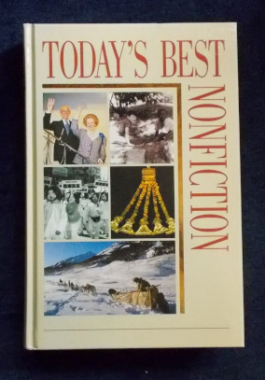 1996 edition. In this volume: The Cult At The End Of The World – The Incredible Story of Aum: David E. Kaplan and Andrew Marshall; Mukiwa – A White Boy In Africa: Peter Godwin; The Lost Treasures Of Troy: Caroline Moorhead; Child Of The Snows: Nicholas Vanier; Below The Parapet - Denis Thatcher: Carol Thatcher.
1996 edition. In this volume: The Cult At The End Of The World – The Incredible Story of Aum: David E. Kaplan and Andrew Marshall; Mukiwa – A White Boy In Africa: Peter Godwin; The Lost Treasures Of Troy: Caroline Moorhead; Child Of The Snows: Nicholas Vanier; Below The Parapet - Denis Thatcher: Carol Thatcher. -
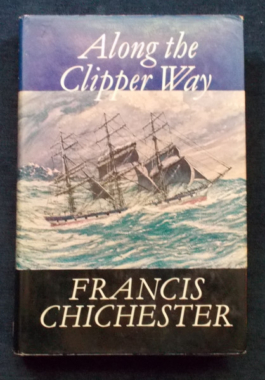 Chichester follows the gold, wool and grain clippers in the majestic days of sail, from Britain round the Cape of Good Hope and back to Britain, taking the reader stage by stage and including stories from single yachtsmen and crewed yachts: racing, shipwreck, total disappearance, icebergs, ice and giant squids. Here's a few very satisfied readers: https://www.goodreads.com/book/show/489. Along_The_Clipper_Way?from_search=true&from_srp=true&qid=51vh4CIKIA&rank=1
Chichester follows the gold, wool and grain clippers in the majestic days of sail, from Britain round the Cape of Good Hope and back to Britain, taking the reader stage by stage and including stories from single yachtsmen and crewed yachts: racing, shipwreck, total disappearance, icebergs, ice and giant squids. Here's a few very satisfied readers: https://www.goodreads.com/book/show/489. Along_The_Clipper_Way?from_search=true&from_srp=true&qid=51vh4CIKIA&rank=1 -
 June, 1942. Johnnie Houlton has arrived in Britain from New Zealand under the Empire Training Scheme only a few months before. From then on and for the next few years, he was almost constantly in action or seeking action with 485 (NZ) Spitfire Squadron. He volunteered for service in Malta and sharply describes the drama of the convoy that took him there and the five months of siege conditions on the island. Houlton vividly recalls the atmosphere and the incidents of the air war from a pilot's-eye view, together with the development and technique of fighter operations - covering daylight bombing missions, low-level bombing and strafing and the formation of the Second Tactical Air Force in support of land forces. Illustrated with black and white photographs.
June, 1942. Johnnie Houlton has arrived in Britain from New Zealand under the Empire Training Scheme only a few months before. From then on and for the next few years, he was almost constantly in action or seeking action with 485 (NZ) Spitfire Squadron. He volunteered for service in Malta and sharply describes the drama of the convoy that took him there and the five months of siege conditions on the island. Houlton vividly recalls the atmosphere and the incidents of the air war from a pilot's-eye view, together with the development and technique of fighter operations - covering daylight bombing missions, low-level bombing and strafing and the formation of the Second Tactical Air Force in support of land forces. Illustrated with black and white photographs.



